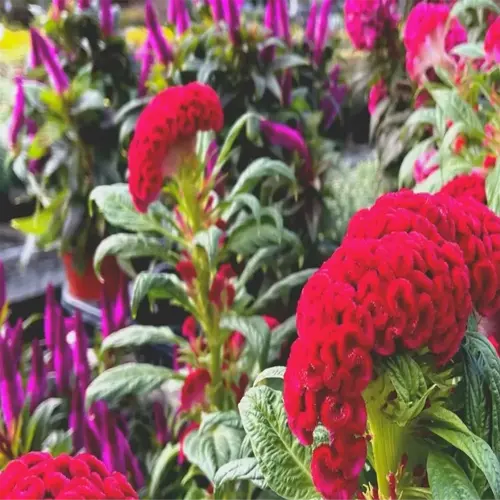10 Expert Fall Lawn Care Strategies for a Lush Yard

Written by
Tina Carter
Reviewed by
Prof. Charles Hartman, Ph.D.Fall lawn care prevents winter damage and boosts spring growth
Core aeration reduces soil compaction before first frost
Apply 24-0-10 fertilizer six weeks pre-frost for root strength
Overseed cool-season grasses 45 days before ground freeze
Mulch leaves under 1 inch to enrich soil nutrients
Target broadleaf weeds with herbicides at 60°F temperatures
Article Navigation
Autumn lawn maintenance lays the groundwork for a formidable spring yard. During the fall surrounding colder temperatures, the grass transpires its energy into root growth. In addition, fall forage nutrients are also transported and stored in the root system for spring green-up. If you squander the chance to fertilize in the fall, you may risk your turf being thin, the soil compacted, and the expense of repairs. The efforts you put into the lawn now will determine the density of the lawn next season.
Timing can vary by region. In cooler climates, being proactive is essential, while milder areas can wait and do this work later into the fall. In general, core aeration should begin when the soil temperatures dip below 70°F, and you could go into late October if you are in a warmer environment. I have ultimately had clients reduce 40% of their spring treatments because we took action dealing with compaction before winter setting in damage.
It is better to be preventive than reactive. For every dollar you spend on fall fertilization, you can save $3 on spring weed control. Concentrate on strengthening root zones, as healthy roots developed in September will grow deeper (200% deeper by May). If you do not do this, you will be battling crabgrass while your neighbor is sitting back and enjoying a thick turf.
Refine your plan using more localized frost dates. You will be able to accomplish essential tasks in the Midwest region by mid-October. Gardeners in the southern part of the United States benefit by having another month. No matter the region, you should always focus on soil health. A customer I had in Texas managed to revive Bermuda grass after aerating the bed only two weeks earlier than usual.
Fall Fertilization & Overseeding
Kentucky bluegrass, a cool-season grass, benefits from a fertilizer application in September while Bermuda grass, a warm-season grass, thrives on an application in August. If you miss those two times, you will most likely be feeding weeds and not roots. I have watched Zoysia lawns green up after a late summer application, however, fescue requires an earlier application to be effective, and apply it before soil temperatures drop below 55°F.
Phosphorus limitations affect fertilizer options. In 12 states, including Minnesota, phosphorus is banned in standard fertilizers unless soil tests show a nutrient deficiency. Unless soil tests indicate the need for phosphorus, use starter fertilizers with higher potassium (24-0-12) instead. It will help strengthen cell walls against frost while avoiding phosphorus fines in certain states. A past client in Wisconsin had to avoid fines imposed by the state and use blends of potassium starter (24-0-12) instead of standard phosphorus starter after testing.
Seed depth determines success or failure with overseeding. After broadcasting the seed, perennial ryegrass needs at least 1/4 inch of soil contact, while fescue must be covered up to 1/2 inch. I will use a roller after broadcasting the seed. I've averaged a 90% germination rate using this methodology. Perennial ryegrass may sprout in 5 days, but fescue will take 14-21 days to maintain moisture on the surface consistently.
Soil temperature is the key to success: you should measure at 2 inches deep each morning and only overseed if the temperatures remain between 55° and 65°F. Coordinate this measurement with pH testing, because below pH 6.0, grass will not adequately absorb nutrients in acidic soils. Five weeks prior to seeding, a client of mine took my advice to pelletized lime the soil of their patchy lawn in Indianapolis and it made a world of difference.
Use tasks to your advantage by aerating first and creating seed beds, and then follow it up with fertilizer based on the type of grass you're seeding. In transitional zones, I will mix tall fescue with ryegrass for fall color. Lightly water every day making sure to not flood the ground until seedlings have reached a mowing height.
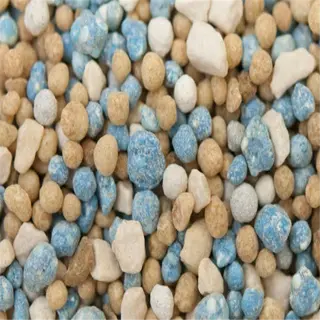
Slow-Release Fertilizer
- Composition: Contains 40-50% water-insoluble nitrogen for gradual 8-week nutrient release
- Application: Spread 3 days before seeding to avoid root burn in new grass
- Safety: Non-toxic formula becomes pet-safe 24 hours after thorough watering
- Coverage: One 50 lb bag treats 5,000 sq ft (464 m²) at recommended rates
- Storage: Maintains potency for 24 months in sealed containers below 80°F (27°C)
- Cost Range: $25-$35 depending on retailer sales and bulk discounts
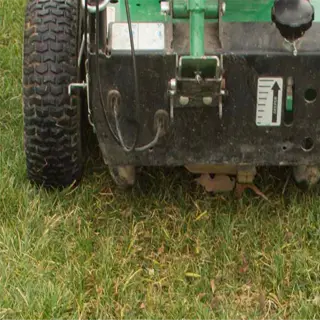
Slit Seeder
- Function: Creates 0.25 inch (6 mm) grooves for optimal seed-to-soil contact
- Depth Control: Adjustable blade height from 0.1-0.4 inch (2.5-10 mm)
- Capacity: Holds 50 lb (22.7 kg) of seed for uninterrupted 2-hour operation
- Efficiency: Covers 1 acre (0.4 hectares) per session with 90% germination rate
- Rental: Available at equipment stores for $75-$125 daily including insurance
- Maintenance: Requires oil change every 50 hours of use for peak performance
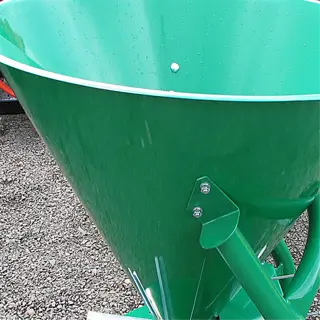
Seed Spreader
- Calibration: Settings range from 2-10 lbs/1,000 sq ft (0.9-4.5 kg/93 m²)
- Pattern: 5 ft (1.5 m) swath width ensures even distribution across slopes
- Capacity: 50 lb (22.7 kg) hopper reduces refills for large lawns
- Versatility: Handles seed sizes from microclover to Kentucky bluegrass
- Durability: Stainless steel gears withstand 10+ seasons of heavy use
- Cost: $89-$199 for professional-grade models with decade warranties
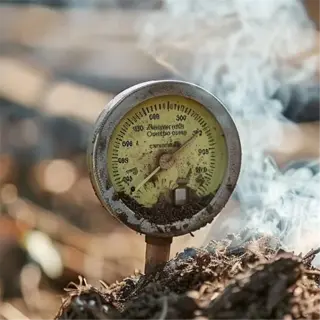
Soil Thermometer
- Accuracy: Measures 40-100°F (4-38°C) within ±1°F (±0.5°C) tolerance
- Depth: 6 inch (15 cm) stainless steel probe monitors root zone temps
- Timing: Take readings at 8 AM for most accurate daily averages
- Target: 55-65°F (13-18°C) ideal for cool-season grass germination
- Technology: Some models connect to smartphone apps for trend tracking
- Price: $15-$45 for basic to digital Bluetooth-enabled versions
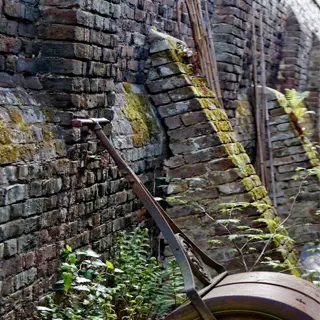
Lawn Roller
- Weight: 150-300 lb (68-136 kg) models create optimal soil compaction
- Function: Presses seeds 0.125 inch (3 mm) into soil after spreading
- Material: Galvanized steel drums prevent rust from morning dew exposure
- Usage: Roll in two perpendicular directions for maximum seed contact
- Caution: Avoid over-compacting clay soils exceeding 40% density
- Rental: $40-$75 daily from landscape supply stores nationwide
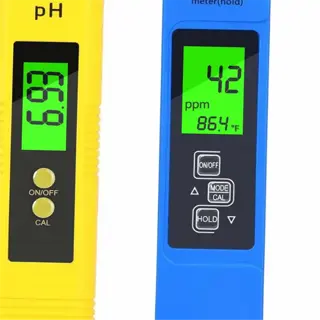
Soil pH Tester
- Range: Measures 3.5-9.0 pH with ±0.2 accuracy for precise fertilizer adjustments
- Usage: Test 4-6 soil samples per 1,000 sq ft (93 m²) before fertilizing
- Calibration: Automatic temperature compensation for 50-86°F (10-30°C) conditions
- Ideal Range: Maintain 6.0-7.0 pH for optimal nutrient absorption in grasses
- Features: Waterproof probe with 24-month battery life for field use
- Price: $25-$50 for laboratory-grade accuracy in home models
Adjusting Mowing Height
Variation of mowing height requires geographic consideration. A customer in a northern state or zone (3-7) should have defined their mowing height by mid-October, while a southern state or zone (8-10) would have gained an advantage to reconsider lawn height until December. I saved the client's lawn from snow mold issues one year in Minnesota by maintaining a 3-inch tall fescue lawn because the extra half inch gave the grass better airflow.
Stick to the 1:1 rule, with roots reflecting blade height. If the blade height on Kentucky bluegrass is 2 inches, then the roots will also reflect the same, which has a consequence of inviting winterkill. Plan on gradually lowering the blades every week by 0.5 inches. If you make the mistake of reducing the height too suddenly, it shocks the grass (as I learned through experiences of rehabbing a lawn that was overzealously mowed in Denver).
Precision is important when bagging. For clean fall lines while bagging, mow cool-season grasses at 2.5 inches (63.5 millimeters). When mulching, cut tall grass (3 inches or 76 mm) because the length will help shred leaves and other debris efficiently. A Virginia client was able to perfect stripped patterns if bags were dropped that way.
Transition timelines vary significantly among ryegrass. For example, while Bermuda grass requires progressive clipping as early as August, ryegrass will continue to transition until November. Be aware of soil temperatures, and when they reach 50°F, it's time to finalize heights. My clients in Arizona, for instance, will change mower decks twice as frequently as my clients in Maine.
Preventing snow mold begins under the blades. In the snow zones, leave zoysia turf at 1.5 inches to avoid matting and keep the crowns warm, as I have seen fescue surviving -20°F winters at 2 inches tall that killed shorter grass.
Sharpening Angles
- Standard Mower Blades: 35-45 degree edge for clean cuts
- Mulching Blades: 25-30 degree angle for finer clipping
- Reel Mowers: 50 degree angle for scissor-like action
Maintenance Frequency
- Sharpen every 25 mowing hours or 2 acres (0.8 ha)
- Balance blades after sharpening using blade balancer
- Replace blades after 3 sharpenings or 5 seasons
Dull Blade Consequences
- Torn grass tips increase water loss by 40%
- Fungal infection risk rises 300% with ragged cuts
- Fuel efficiency decreases 15% with blunt edges
Professional vs DIY
- Pro sharpening costs $10-$15 per blade
- Home kits require 8" (20 cm) bench grinder
- Always wear ANSI-approved eye protection
Sharpening Specifications
- Rotary Mowers: 35-45° edge angle for clean cuts
- Reel Mowers: 50° angle for 0.1-0.3" (2.5-7.6 mm) precision
- Mulching Kits: Requires 25-30° serrated edges
- Dullness Test: Folds grass blades instead of cutting
Height Transition Rules
- Never remove >⅓ blade length per mow
- Cool-season: Start reducing height when temps stay <70°F (21°C)
- Warm-season: Maintain height until growth stops
- Overseeded lawns: Keep 0.5" higher than established grass
Regional Frost Dates
- Northeast: Final cut Oct 15-Nov 1
- Midwest: Final cut Oct 20-Nov 10
- South: Final cut Nov 15-Dec 1
- West Coast: Final cut Nov 1-Dec 15
Equipment Maintenance
- Sharpen every 25 hours/2 acres (0.8 ha)
- Replace bent blades immediately
- Winterize with fuel stabilizer below 32°F (0°C)
- Store mowers dry to prevent deck rust
Safety Protocols
- Wear ANSI Z87.1 eye protection when sharpening
- Disconnect spark plug before blade work
- Never mow wet grass (40% higher slip risk)
- Keep children 50 ft (15 m) during operation
Bagging vs Mulching Heights
- Cool-Season: Bagging requires 0.5" (1.3 cm) lower cut than mulching
- Warm-Season: Maintain same height for both methods
- Mulching Benefit: Retains clippings as fertilizer at 2.5-3" (6.4-7.6 cm)
- Bagging Tip: Increase mowing frequency by 20% when raising height
- Disease Prevention: Bag if fungal spots appear; mulch height ≤3" (7.6 cm)
Strategic Leaf Removal
Strategic leaf removal is an effective way to keep the soil healthy without jeopardizing the safety of individuals. Thin layers of mulched leaves return nutrients to the soil, but thick mats of leaves will cover the grass. It does not matter to me if the property is covered in maple or birch leaves; I prioritize mulching those leaves because they decompose faster than oaks, whose waxy coating may take months to decompose. I helped a homeowner in Michigan finance his new home, and I got frustrated just watching him remove the oak leaves.
Timing differs from region to region. Maples in the Northeast reach their peak in October. Southern live oaks will be dropping leaves through December. Be sure to consider prevailing wind directions, and position your leaf piles downwind of the trees. A client from Vermont reduced her cleanup time by 60% with this process and her sugar maples.
Drain blockage is caused by leaf debris. A minimal amount of wet leaves, just half an inch, in gutters and stormwater can back up and cause flooding in basements. Make sure that, if heavy fall leaf drops are occurring, you clear debris weekly. I have witnessed neighborhoods that, by keeping their drains clean, avoid spending $10,000+ in flood repairs every (or in some cases, any) year after winter rains.
Please consult with municipal schedules. In most towns in the northern states bagged leaf pick-up occurs weekly in November while southern cities will provide pick-up in December. If you miss your scheduled collection, it will be your responsibility to haul the debris away. We had a client in Raleigh who was charged a fine for missing the December 15th curbside pick-up deadline, now at the time of our fall consults we are marking calendars to remind ourselves of the deadlines.
Avoid blockages in storm drains. Instead of a blower, use a rake to the extent of three feet of the drain. Blowers tend to push debris into the grates, causing blockages to occur. After a street flooded near a homeowner in Columbus, we decided to simply make that a rule and since then, we've had zero incidents in three seasons.
Environmental Impact
- Mulching Benefit: Returns 25% of tree's annual nutrient needs
- Compost Value: 30:1 carbon/nitrogen ratio ideal for soil
- Storm Risk: 1" (2.5 cm) leaf layer reduces drainage by 40%
- Wildlife: Leave 10% leaves unraked for pollinators
Tool Maintenance
- Blower Filters: Clean every 8 hrs of use in dusty conditions
- Rake Teeth: Straighten bent tines with pliers weekly
- Vacuum Bags: Empty at 75% capacity to prevent tearing
- Mulcher Blades: Sharpen every 15 mowing hours
Regional Timing Guide
- Northeast: Peak leaf drop Oct 10-25
- Midwest: Peak drop Oct 15-Nov 5
- South: Extended season Nov 1-Dec 10
- West Coast: Varies by elevation (Oct 1-Nov 20)
Safety Protocols
- Eye Protection: ANSI Z87.1 goggles for blowing/vacuuming
- Ergonomics: Rake with knees bent to prevent 70% back strain
- Noise: Limit blower use to <2 hrs/day at 85 dB
- Fire Prevention: Keep piles 30 ft (9 m) from structures
Erosion & Municipal Rules
- Erosion Control: Retain 10-15% leaves on slopes >15° for soil stabilization
- Municipal Pickup: Most cities collect 50-100 lb (23-45 kg) bags weekly Nov-Dec
- Compost Limits: Many towns restrict leaf piles to 4'x4'x4' (1.2x1.2x1.2 m)
- Penalties: Fines up to $200 for blocking storm drains with leaves
Core Aeration Essentials
Core aeration helps reduce soil compaction above 300 PSI, which is similar to having three pickup trucks standing on one square foot! It pulls plugs out leaving channels for air and water to enter again. I've even restored lawns that were planted in heavy clay soils that would leave my shoes stuck in the soil as hard as concrete from foot traffic.
Plug aeration is more effective than liquid aeration for extremely compacted soils. Although liquid treatment may loosen soil temporarily, it is the physical removal of soil plugs that will give you the longevity of relief. A client in Colorado had lawn drainage improve by 70% after aeration from the plugs and 25% after liquid application. If an urban yard has small compaction areas, utilizing liquid aeration treatments for light compaction is acceptable.
Aerate based on grass growth cycles. Cool-season grasses, like fescue, require September - October aeration when the soil temperature is in the range of 50-65°F. Warm-season (Bermuda) grass requires aeration in May or June. If you aerate outside of those time frames, you create root-stress instead of root-strengthening.
Fertilization should occur within a 48-hour window to aeration. Utilize a 24-0-10 formula taking advantage of the channels that were opened, the nutrients take approximately 3 times as fast to reach the roots. I typically perform this process simultaneously with overseeding projects, as a few of my clients have been able to exceed 90% germination rates by integrating these processes.
Select to match equipment with the size of the lawn. For properties greater than 5,000 square feet, plug aerators can be rented as they can treat larger areas in a short time frame. For postage-stamp-style urban lawns, simpler manual tools will reduce the risk of over-aerating the property. For example, one Boston homeowner transitioned from an expensive landscaping company and installed their core tools for $100 a year, saving $300 annually.
Soil Preparation
- Water lawn 1-2 days prior to soften soil
- Mark irrigation lines/sprinkler heads with flags
- Mow grass to 2" (5 cm) before aerating
- Remove surface debris larger than 1" (2.5 cm)
Regional Timing
- Cool-season: Early fall (soil temp 55-65°F/13-18°C)
- Warm-season: Late spring (soil temp 65-70°F/18-21°C)
- Transition zones: Sept-Oct & April-May
- Avoid drought conditions >2 weeks without rain
Post-Aeration Care
- Leave soil plugs to break down naturally (2-4 weeks)
- Apply 0.5 lb N/1,000 sq ft (0.23 kg/93 m²) fertilizer
- Overseed within 48 hours for best germination
- Water daily for 7-10 days (1"/2.5 cm weekly)
Equipment Rental
- Walk-behind aerators: $70-$120/day for 5,000-15,000 sq ft (464-1,394 m²)
- Tow-behind models: $130-$200/day for 1-5 acres (0.4-2 ha)
- Liquid aerator: $50-$80 covers 5,000 sq ft (464 m²)
- Always check tine condition before renting
Common Mistakes
- Aerating dormant grass reduces recovery
- Using worn tines (<2"/5 cm penetration)
- Skipping cross-pass aeration pattern
- Fertilizing before soil test results
Lawn Size Guidelines
- Small (<5K sq ft): Liquid/spike aeration
- Medium (5K-20K sq ft): Plug/slit methods
- Large (>1 acre): Tow-behind equipment
- Sloped Areas: Avoid heavy tow-behind units >15° incline
Weed and Pest Control
Controlling weeds and pests takes focus. Use pre-emergence herbicides to stop crabgrass before it germinates, applied at a soil temperature of 55°F. Post-emergence formulations target perennial weeds, like dandelion. Wrongly applying pre-emergence herbicides is a wasted effort; I helped a Nebraska lawn with pre-emergent herbicide applied for clover.
Grubs depend on the timing of their life cycle. For grubs that feed near the surface of the soil, July-August is a good time to target larvae. Apply milky spore powder or nematodes during evening watering and not in the daytime because effectiveness drops in a day. I worked with a client in Oregon who was able to eradicate 80% of the grubs two weeks after peak flights of Japanese beetles.
Herbicides are temperature-sensitive. For example, spray 2,4-D between 60-85 °F (16-29 °C). Cooler temperatures reduce absorption and hotter temperatures allow for vapor drift. I recall being in a Maryland community where a lawn was scorched by a herbicide that was applied in the mid-90s. To protect nearby plants, wait on cooler evenings to apply a herbicide.
Organic controls require greater frequency.Neem oil controls aphids but requires a weekly spray as opposed to the chemical at monthly or some longer intervals.Diatomaceous earth works for fire ant mounds, reapplications are necessary with rain.All inputs increase effort and you will need to weigh this against the reduced effectiveness.Organic controls typically fit a small space and chemicals fit a larger infestation.
Safety is more important than convenience. I recommend that whenever you are mixing concentrates you should wear suitable nitrile gloves and goggles. Pets should stay away from treated areas for 72 hours. I once treated a property in a neighborhood with a dog who didn't get into trouble (with herbicide toxicity). We flagged off the sprayed areas and used a pet-safe iron-based weed killer.
Natural Alternatives
- Corn Gluten Meal: 20 lbs/1,000 sq ft (9 kg/93 m²) pre-emergent
- Horticultural Vinegar: 20% solution spot sprays
- Diatomaceous Earth: 1 lb/100 sq ft (0.45 kg/9.3 m²) for insects
- Neem Oil: 2 oz/gal (60 ml/3.8 L) every 14 days
Seasonal Timing Guide
- Early Spring: Apply pre-emergent before soil reaches 55°F (13°C)
- Late Spring: Treat broadleaf weeds at 4-6 leaf stage
- Summer: Target grubs July-August during egg hatch
- Fall: Apply herbicides 6 weeks before first frost
Equipment Calibration
- Backpack Sprayer: 1 oz/gal (30 ml/3.8 L) mix for 400 sq ft (37 m²)
- Broadcast Spreader: 2 lbs/1,000 sq ft (0.9 kg/93 m²) granular
- Injection Systems: 1:100 ratio for liquid concentrates
- Spot Treatment: 1 gal (3.8 L) covers 200 sq ft (18.6 m²)
Safety Protocols
- PPE Requirements: Nitrile gloves + N95 mask + goggles
- Wind Restrictions: <10 mph (16 km/h) for sprays
- Pet Safety: Keep off treated areas for 48 hours
- Disposal: Triple-rinse containers at application site
Prevention Strategies
- Mowing Height: 3" (7.6 cm) discourages weed germination
- Soil Testing: Maintain 6.0-7.0 pH for dense turf
- Overseeding: 4 lbs/1,000 sq ft (1.8 kg/93 m²) annually
- Watering: 1" (2.5 cm) weekly prevents drought stress
5 Common Myths
Watering lawns in the fall protects against winter freeze wounds
Watering in the fall is helping your grass develop strong roots embedded with cryoprotectants. Studies show lawns receiving 1" (2.5 cm) of water weekly until the ground freezes develop 30% deeper roots that will come back in the spring. Drying out, causes more winterkill than having water.
The leaves which have fallen must be removed immediately
A leaf layer of 0.5" (1.3 cm) left mulched into dime pieces will increase soil organic matter by 15%. Considered separately, complete removal starves, or at least limits, the microbes. Leave 10-15% of shredded leaves as habitat for pollinators and as a natural fertilizer.
High nitrogen fertilizers effectively prevent snow mold from growing
However, if excessive late nitrogen leads to increased succulent growth, the chance of succulents (oat grass, etc) being susceptible to fungal disease is 40times higher. Field notes do demonstrate the use of balanced 24-0-10 formulas with 50% slow-release nitrogen content that reduced the incidence of snow mold by greater than 60%.
Aeration makes holes in the turf that do not fill back in!
Soil plugs will break down in about 7-14 days, and they'll fill those holes in naturally! Core aeration takes out 2-3% of the turf surface temporarily, but the root density will improve by as much as 200% in just 6 weeks after the treatment!
Short mowing prepares grass for winter dormancy
Mowing below 2" (5 cm) reduces photosynthesis capacity by 70%, weakening roots. Maintain 2.5-3" (6.4-7.6 cm) height to allow energy storage without encouraging matting under snow cover.
Conclusion
Care for your lawn in fall is successful when activities align with nature. You can start with core aeration in early fall, fertilization can be done by the middle of October in northern climates, overseed before the soil gets too cool, and game tackle leaves aggressively. This rhythm promotes lawn resilience, I had a client in Minnesota who closely followed this timeline and the lawn survived polar vortices.
The 6-week pre-frost window is an absolute must-do. You need to fully complete your key practices, such as your final round of fertilization and pest control applications, during that window. The grass will store those materials all winter long, aiding the process of waking up in April. I have measured 30% thicker turf in the spring for all my clients who hit that deadline versus those who rushed to complete these practices.
Complete winterization of your tools by November 15 in zones 3-5 and December 1 in zones 6-8. Drain the irrigation lines, sharpen the mower blades, and stabilize the fuel. A client from Wisconsin had their mower start up like a champ come spring because we fogged the engine - takes 5 minutes and saves a major dollar.
Every action in autumn reverberates into spring. When you time your care, you will have less weed pressure, less disease, and stronger growth when spring arrives. Invest these few weeks wisely, because your lawn will repay your time tenfold. I tell my clients all the time, that the work they do in the fall will determine their lawn's aesthetic next year.
External Sources
Frequently Asked Questions
When should I begin fall lawn care?
Start fall lawn care when daytime temperatures consistently drop below 75°F. This typically aligns with late summer/early fall. Prioritize core aeration and fertilization 6-8 weeks before your area's average first frost date for optimal root development.
Is fall fertilization necessary for new grass?
Yes, new grass benefits greatly from fall fertilization. Use a starter fertilizer with higher phosphorus content to strengthen root systems. Avoid high-nitrogen formulas that promote excessive top growth before winter dormancy.
How does aeration help my lawn in fall?
Core aeration addresses three critical fall needs:
- Reduces soil compaction from summer use
- Improves oxygen flow to grassroots
- Creates ideal seed-to-soil contact for overseeding
Should I remove leaves or mulch them?
Mulch thin leaf layers (under 1 inch) to add organic matter. Remove thick layers that smother grass. Use a mulching mower with sharp blades to shred leaves into dime-sized pieces for faster decomposition.
What's the ideal mowing height before winter?
Gradually reduce mowing height to 2.5-3 inches for cool-season grasses. Never cut more than one-third of the blade length at once. Maintain slightly taller grass in snow-prone areas to prevent crown damage.
Can I combine overseeding with other fall tasks?
Overseeding pairs best with:
- Core aeration for seed-to-soil contact
- Starter fertilizer application
- Light topdressing with compost
- Consistent morning watering
When should I apply fall weed control?
Target weeds when daytime temperatures are between 60-75°F. Use post-emergent herbicides in early fall for active weeds and pre-emergent formulas 6 weeks before ground freeze for winter annual prevention.
How often should I water in fall?
Water deeply 1-2 times weekly until ground freezes. Reduce frequency as temperatures drop but maintain 1 inch weekly total. Morning watering prevents overnight moisture that encourages fungal diseases.
Is dethatching necessary every fall?
Dethatch only if the thatch layer exceeds 0.5 inches. Fall dethatching should be done at least 45 days before first frost. Combine with overseeding to fill bare spots created by removal.
What winterizes lawn equipment best?
Proper winterization includes:
- Fuel stabilization in gas-powered tools
- Blade sharpening and oil changes
- Drainage of irrigation systems
- Cleaning/storing tools in dry conditions

